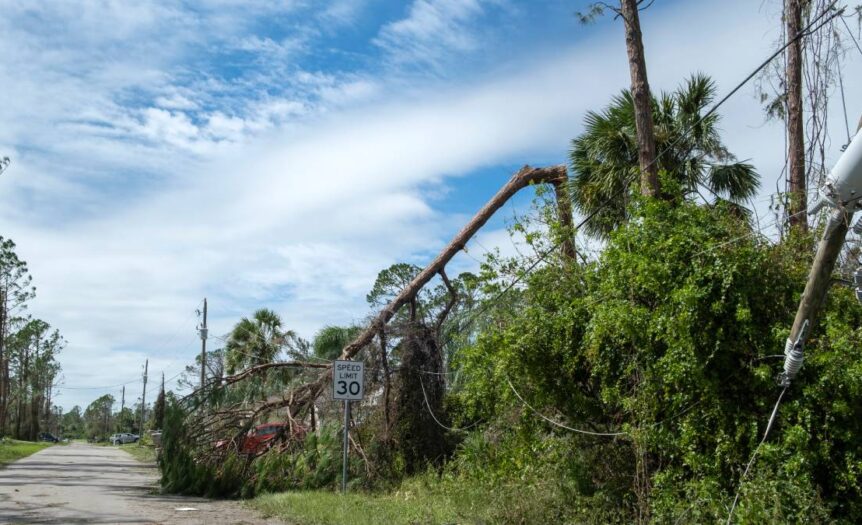Florida faces unique challenges from hurricanes, prompting significant changes in infrastructure to enhance resilience and protect communities. Efforts to strengthen power systems, improve building standards, and fortify coastal defenses showcase a proactive approach to minimizing hurricane damage. Transportation and emergency power systems are also evolving to help critical services remain operational during extreme weather.
Strengthening Power Infrastructure
Hurricane-resistant materials now dominate Florida’s power infrastructure upgrades. Replacing traditional wooden poles with stronger options, such as concrete and steel, significantly reduces the risk of power outages.
Concrete and steel poles provide better storm resistance and offer a longer lifespan, making them ideal for areas frequently battered by hurricanes. Utilities increasingly prioritize underground power lines in vulnerable regions, reducing exposure to high winds and flying debris. Florida’s infrastructure is changing to combat hurricanes, and these advancements in power systems provide better reliability for residents during storms.
Enhancing Building Codes and Standards
Updated building codes ensure new constructions withstand hurricane-force winds and flooding. For example, reinforced roofing systems reduce the likelihood of roof detachment during severe storms. Impact-resistant windows are now necessary for minimizing structural damage and protecting occupants.
Elevated structures combat flood risks, especially in flood-prone areas, by keeping living spaces above projected water levels. Homeowners are also retrofitting older homes to meet modern standards, further reducing vulnerabilities.
Fortifying Coastal Defenses
Coastal areas face some of the worst hurricane impacts, leading to investments in natural and man-made defenses. Enhanced seawalls shield communities from storm surges, while reinforced dunes create an additional protective barrier.
Restoring and expanding mangrove forests provides dual benefits, acting as natural storm buffers and preserving biodiversity. Coastal improvements protect properties and safeguard Florida’s valuable ecosystems.
Advancing Transportation Infrastructure
Hurricane-resilient transportation systems offer safer evacuations and reliable access to emergency services. Florida now prioritizes raised roadways in flood-prone areas to maintain accessibility during storms.
Bridges built to higher hurricane-resistant standards can better withstand extreme conditions and keep critical connections between communities intact. Florida supports public safety and long-term infrastructure durability by investing in these upgrades.
Developing Statewide Emergency Power Solutions
Emergency power systems are crucial in hurricane preparedness and recovery. Florida increasingly relies on hurricane-hardened substations capable of maintaining power during extreme weather. Utility companies also deploy mobile power units to restore electricity in affected areas more quickly.
Underground power grids, already a focus for long-term reliability, are expanding to cover broader regions. Florida’s infrastructure is changing to combat hurricanes and improve emergency power systems for stable communication during and after storms.
Florida’s ongoing infrastructure improvements demonstrate a commitment to protecting communities and reducing hurricane-related damage. Strengthened power systems, updated building codes, fortified coastal defenses, resilient transportation networks, and enhanced emergency power solutions collectively contribute to greater safety and reliability.
Residents benefit from these advancements as they mitigate risks for quicker recovery. Individuals and businesses can actively support efforts to build a more hurricane-resilient Florida by staying informed about these changes.










 Deering Estate
Deering Estate
 Massage Envy South Miami
Massage Envy South Miami
 Calla Blow Dry
Calla Blow Dry
 My Derma Clinic
My Derma Clinic
 Sushi Maki
Sushi Maki
 Sports Grill
Sports Grill
 The Healthy Kitchen
The Healthy Kitchen
 Golden Rule Seafood
Golden Rule Seafood
 Malanga Cuban Café
Malanga Cuban Café

 Kathleen Ballard
Kathleen Ballard
 Panter, Panter & Sampedro
Panter, Panter & Sampedro
 Vintage Liquors
Vintage Liquors
 The Dog from Ipanema
The Dog from Ipanema
 Rubinstein Family Chiropractic
Rubinstein Family Chiropractic
 Your Pet’s Best
Your Pet’s Best
 Indigo Republic
Indigo Republic




 ATR Luxury Homes
ATR Luxury Homes


 2112 Design Studio
2112 Design Studio
 Hamilton Fox & Company
Hamilton Fox & Company
 Creative Design Services
Creative Design Services
 Best Pest Professionals
Best Pest Professionals
 HD Tree Services
HD Tree Services
 Trinity Air Conditioning Company
Trinity Air Conditioning Company
 Cisca Construction & Development
Cisca Construction & Development
 Mosquito Joe
Mosquito Joe
 Cutler Bay Solar Solutions
Cutler Bay Solar Solutions


 Miami Royal Ballet & Dance
Miami Royal Ballet & Dance
 Christopher Columbus
Christopher Columbus
 Pineview Preschools
Pineview Preschools
 Westminster
Westminster
 Carrollton
Carrollton
 Lil’ Jungle
Lil’ Jungle
 Frost Science Museum
Frost Science Museum
 Palmer Trinity School
Palmer Trinity School
 South Florida Music
South Florida Music
 Pinecrest Orthodontics
Pinecrest Orthodontics
 Dr. Bob Pediatric Dentist
Dr. Bob Pediatric Dentist
 d.pediatrics
d.pediatrics
 South Miami Women’s Health
South Miami Women’s Health

 The Spot Barbershop
The Spot Barbershop
 My Derma Clinic
My Derma Clinic




 Miami Dance Project
Miami Dance Project

 Rubinstein Family Chiropractic
Rubinstein Family Chiropractic
 Indigo Republic
Indigo Republic

 Safes Universe
Safes Universe
 Vintage Liquors
Vintage Liquors
 Evenings Delight
Evenings Delight





 Atchana’s Homegrown Thai
Atchana’s Homegrown Thai
 Baptist Health South Florida
Baptist Health South Florida

 Laser Eye Center of Miami
Laser Eye Center of Miami
 Visiting Angels
Visiting Angels
 OpusCare of South Florida
OpusCare of South Florida

 Your Pet’s Best
Your Pet’s Best





 HD Tree Services
HD Tree Services
 Hamilton Fox & Company
Hamilton Fox & Company


 Creative Design Services
Creative Design Services